Make
your string instrument
RESONATE
with LQ+ solutions
Our resonators are handcrafted in the workshops of Masters of violin making and artistic wood turning in Matera (European Capital of Culture 2019).
I nostri risonatori vengono creati a mano nei laboratori di Maestri di liuteria e tornitura artistica del legno a Matera (Capitale Europea della Cultura 2019).
CELLO LQ+RC
Tailpiece Resonator | Risonatore a cordiera
The tailpiece resonator LQ+RC, a jewel with an engaging design - whether appropriately spaced from the bridge of the instrument - picks up the vibration of the length of the string beyond the bridge, a length until now superficially neglected. This error was produced from the inability to design an instrument that could, on the contrary, make it listen in a useful, timely and enriching way.
The cellist Tortellier himself, convinced that this part of the string could be useful for vibration, tried to eliminate the tailpiece, considered by him to be an obstacle, yet without obtaining appreciable results, since the strings alone did not constitute resonances in line with the resonance mode, without an adequate means to make them resonate.
Il Risonatore a cordiera LQ+RC, un gioiello dall’accattivante design, capta – se distanziato opportunamente dal ponte dello strumento – la vibrazione della lunghezza della corda oltre il ponte, lunghezza sino ad oggi superficialmente trascurata. Questo errore nasceva altresì dall’incapacità di progettare uno strumento che potesse, al contrario, farla ascoltare in modo utile, opportuno ed arricchente.
Lo stesso violoncellista Tortellier, convinto che quella parte della corda potesse essere utile alla vibrazione, provava ad eliminare la cordiera perché, secondo lui, ostacolante, senza però ottenere risultati apprezzabili, in quanto le corde da sole non costituivano risonanze in linea con i modi di risonanza, senza un mezzo adeguato per farle risonare.

CELLO LQ+RP
Floor Resonator | Risonatore a pavimento
The floor Resonator, suitably designed to pick up targeted wave frequencies, collects the resonance modes emitted by the tip and the lower part of the instrument. In this regard, it must be explained clearly that the shapes and dimensions developed by classical violin-maker arranged the resonance chamber of the instrument in such a way as to have the low and basic harmonics produced by the string in tune right in the lower and widest part of the instrument, while the upper part usually smaller enhances the overtones.
LQ+RP, therefore, by collecting the low resonance modes, enhances them, not allowing them to be dissipated in the floor and in the air, projecting them into the great acoustics of theaters, large concert halls and even in outdoor environments.
Il Risonatore a Pavimento, opportunamente progettato per captare frequenze d’onda mirate, raccoglie i modi di risonanza propri emessi dal puntale e dalla parte bassa dello strumento. A tal proposito bisogna spiegare bene che le forme e le dimensioni messe a punto dalla liuteria classica organizzavano la cassa di risonanza dello strumento in modo da avere le armoniche basse e di base prodotte dalla corda intonata proprio nella parte bassa e più larga dello strumento, mentre la parte alta solitamente più piccola esalta gli ipertoni.
LQ+RP, pertanto, raccogliendo i modi di risonanza gravi, li esalta, non permettendo che vengano dissipati nel pavimento e nell’aria, proiettandoli nelle grandi acustiche dei teatri, delle grandi sale da concerto e addirittura negli ambienti all’aperto.

CELLO LQ+RE
Endpin Resonator | Puntale di risonanza
The material used for RE is copper, a noble metal in nature, with true properties of high acoustic resonance and with an elastic capacity to bring the sound wave enriched by RP back into the cello, creating a circularity of sound and a true coupling of resonance modes. Such process would not be possible with materials such as titanium, fibers, other metals, etc.
Il materiale utilizzato per RE è il rame, metallo nobile presente in natura, che possiede proprietà vere di risonanza acustica elevata e una capacità elastica per riportare l’onda sonora arricchita da RP nel violoncello, realizzando una circolarità del suono e un vero accoppiamento di modi di risonanza. Processo questo non possibile con materiali come titanio, fibre, altri metalli, ecc.
VIOLIN LQ+RC
Tailpiece Resonator | Risonatore a cordiera
The tailpiece resonator LQ+RC for violin, a jewel with an engaging design - whether appropriately spaced from the bridge of the instrument - picks up the vibration of the length of the string beyond the bridge, a length until now superficially neglected. This error was produced from the inability to design an instrument that could, on the contrary, make it listen in a useful, timely and enriching way.
Il Risonatore a cordiera LQ+RC per violino, un gioiello dall’accattivante design, capta – se distanziato opportunamente dal ponte dello strumento – la vibrazione della lunghezza della corda oltre il ponte, lunghezza sino ad oggi superficialmente trascurata. Questo errore nasceva altresì dall’incapacità di progettare uno strumento che potesse, al contrario, farla ascoltare in modo utile, opportuno ed arricchente.














